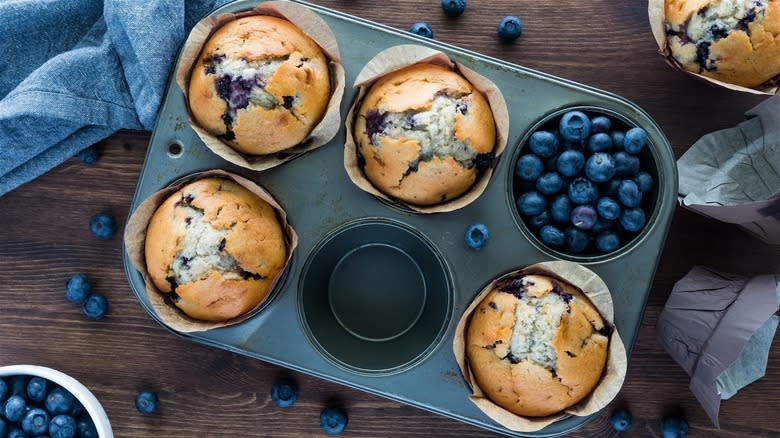What Happens When You Undermix Muffin Batter

A quality muffin should be fluffy, springy, and moist. By comparison, a muffin that is dense and chewy is far less enjoyable to eat. There's a lot that goes into making muffins to give them a flawless texture, and that all starts with the batter. If you play your baking cards right, you may end up with the perfect accompaniment to a cup of coffee in the morning.
You should never undermix muffin batter. As with pancakes, muffin batter has a sweet spot for mixing, when the batter should be incorporated so that it's still lumpy but contains no visible streaks of dry ingredients. These unincorporated dry ingredients are a telltale sign that the muffins will come out of the oven looking flat and lacking in volume. The inside of this muffin will have an uneven, dense, and crumbly texture. It's still edible (and probably still fairly tasty) but just slightly disappointing.
Read more: 12 Little-Known Facts About Salt
Incorporating The Leavening Ingredient Is Key

Thankfully, mixing muffin batter properly is not too difficult. (Just don't let yourself get lost in thought as you mindlessly stir.) If patches of dry ingredients continue to reveal themselves, you have yourself an undermixed batter. Continue to stir it so that the batter remains lumpy — but only until the dry ingredients disappear. No one wants to bite into a pocket of dry flour in their muffin.
Besides dry ingredients, a flat top and dense crumb are the other outcomes of an undermixed muffin. Poor incorporation of the leavening agent (baking powder) results in a lack of volume. With the heat from the oven and moisture from the batter, baking powder does its job by producing carbon dioxide bubbles that aerate the batter and give it height. If the leavener is not fully dispersed throughout the batter, the muffin will not rise evenly. The other issue with not stirring enough is a lack of gluten development, which otherwise gives muffins a structure that won't crumble.
Conversely, you should never overmix the batter, which is arguably worse than undermixing. Stirring too much will overdevelop the gluten and cause a loss of carbon dioxide, resulting in a tough texture with inconsistent tunnel-shaped air bubbles.
Read the original article on Mashed.

